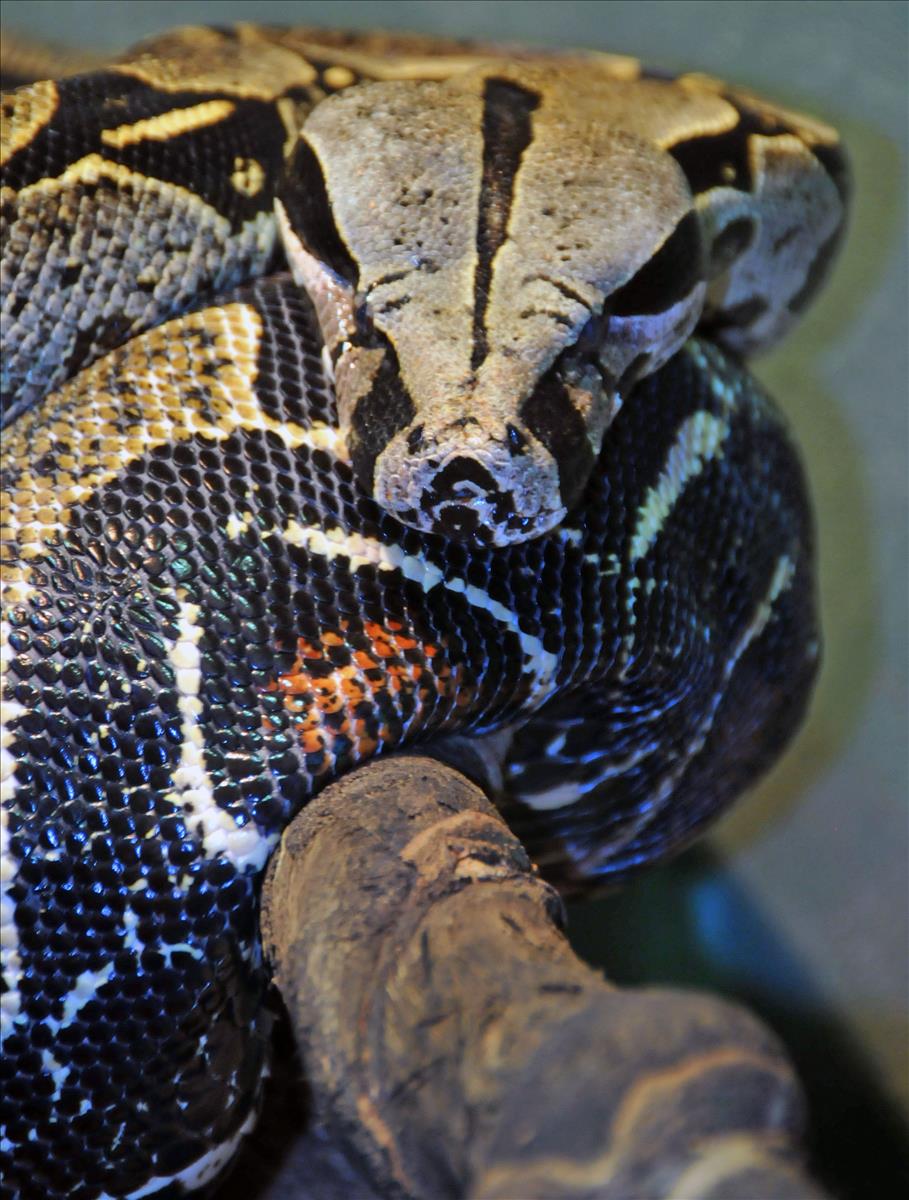Viewable


Reptile
Location at the Zoo
Americas
Global Range
South and Central America
Boa constrictor
Boa constrictor "constrictor"
Order: Squamata
Family: Boidae
Genus: Constrictor
This new world snake has an average length of two to three metres while the largest ever recorded was 5.5 m. Sexual dimorphism (difference between males and females) includes females generally being larger in body length and girth, whereas males generally have longer tails (containing the hemipenes) and longer cloacal spurs (vestigal hind legs).
Conservation Status: IUCN

Distribution
Boa constrictors range from northern Mexico south through Central and South America. In South America the range splits along the Andes mountains. To the east of the Andes, they are found as far south as northern Argentina. On the west side of the mountains, the range extends into Peru. Boa constrictors are also found on numerous islands off the Pacific coast and in the Caribbean. Islands included in the boa constrictor range are: the Lesser Antilles, Trinidad, Tobago, Dominica, and St. Lucia. Some islands off the coast of Belize and Honduras are also inhabited by this species.Habitat
Ranges from tropical rain forest to semi-desert. In Mexico it is found in semi-arid regions, on the fringes of deserts. In tropical America it is found in the dense, wet jungles (rarely entering water). They spend much of their time in trees but are also found near cultivated land and plantations. They will enter villages in search of food.Diet
Prey items include large lizards, birds, and small mammals (bats, monkeys, squirrels, opposums, rats, pacas, agoutis and wild pigs). There have been occasions where fairly large animals have been taken. Those boas entering villages would take rodents and chickens.Reproduction
Seasonal changes trigger breeding behaviour. This generally takes place in the dry season. During this period the female emits a scent from her cloaca. Females do not necessarily reproduce annually. Boa constrictors are ovoviviparous; embryos develop within their mothers' bodies. This places a great physical demand on females and a period of recovery is needed after the birthing process to restore fat reserves.Males are polygynous, mating with more than one female. Boas are considered to be primitive snakes. Both the male and female have a pair of spurs, one on either side of the cloaca. The male's spurs are longer than the female's. He uses them to stimulate the female by scratching her body, especially around the cloaca. When ready to mate, the male inserts one of his two hemipenes into the female's cloaca. Fertilized ova are retained in the female's body for incubation. Young are born live (ovoviviparous). Up to 60 young are born, about 30-40 cm at birth. They are independent soon after birth.











